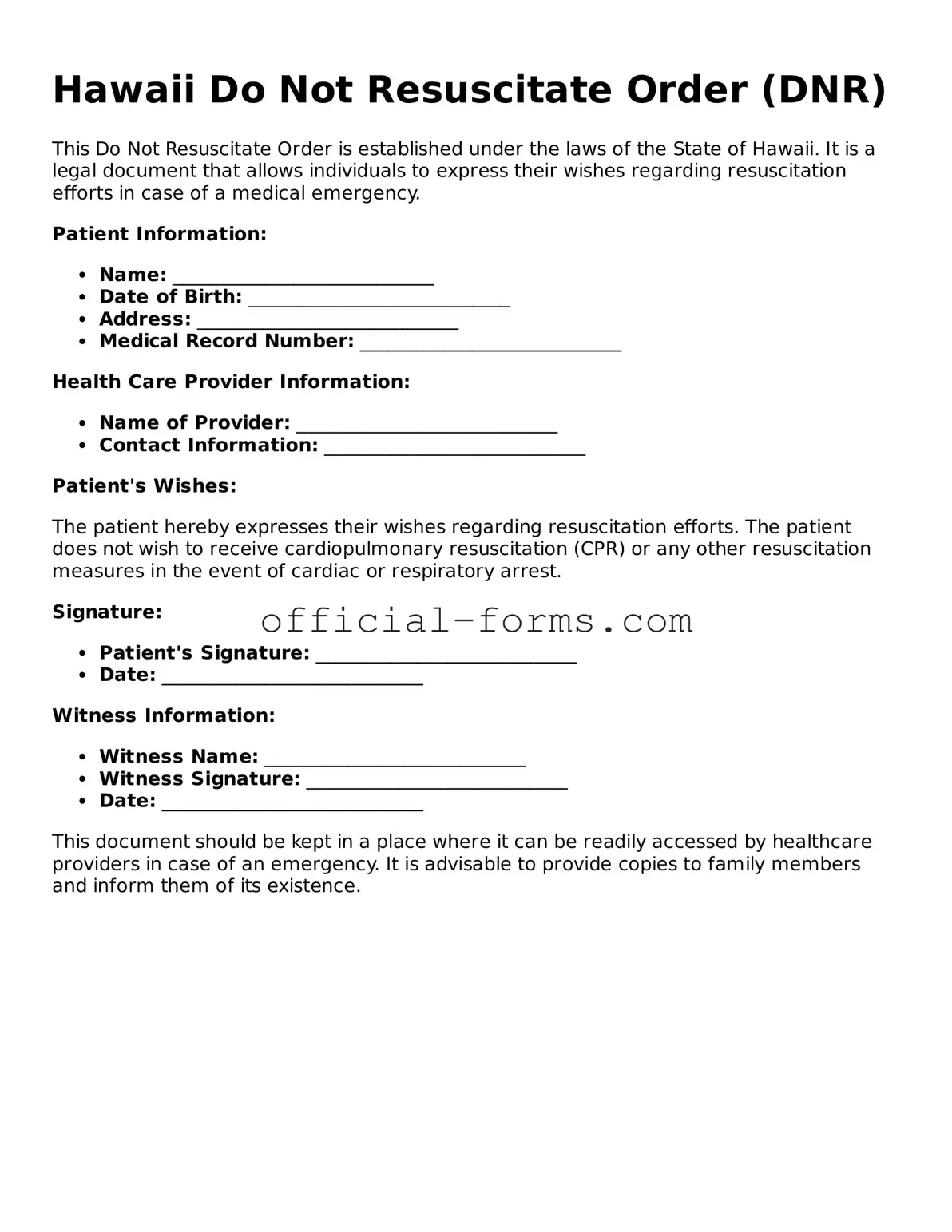Official Hawaii Do Not Resuscitate Order Document
A Hawaii Do Not Resuscitate Order (DNR) form is a legal document that allows individuals to express their wishes regarding resuscitation efforts in the event of a medical emergency. By completing this form, a person can indicate that they do not wish to receive cardiopulmonary resuscitation (CPR) or other life-saving measures. This decision is deeply personal and can provide peace of mind to both the individual and their loved ones.
Open My Do Not Resuscitate Order Now
